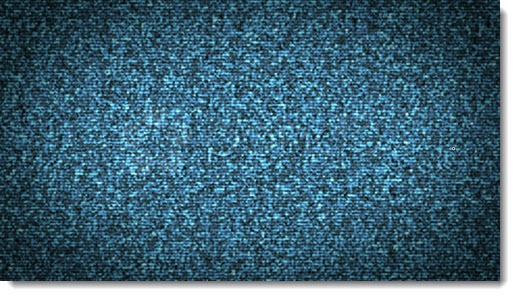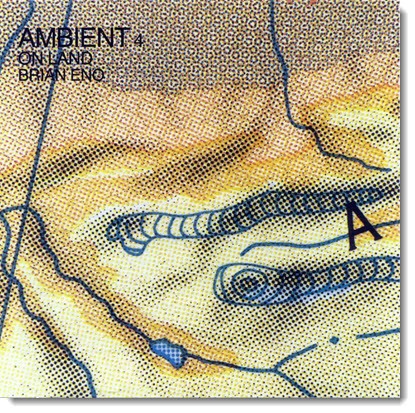
“Ambient music must be able to accommodate many levels of listening attention without enforcing one in particular; it must be as ignorable as it is interesting.“ – Brian Eno, liner notes for Ambient 1: Music for Airports (1978)
Ambient music and sounds can increase your productivity. Here are some apps and music selections that might be the best thing you’ve ever ignored while you’re getting work done.
Many people work effectively and stay focused in silence. In our modern world, silence is sometimes hard to come by. Open offices expose workers to conversations in adjoining cubicles. We carry laptops and tablets with us to work in coffee houses and public spaces where there are constant distractions. Our devices beep and vibrate and tempt us with nonstop notifications.
Ambient sounds are designed to filter out distractions and help you concentrate.
Most music is designed to be interesting – meaning that it will take you out of your workflow as you identify the melody or appreciate a solo or pay attention to a nice vocal phrasing. That’s why the musician creates the music, that’s why we listen to it – but music does not create the environment where you can work most effectively.
Brian Eno first developed the idea of ambient music in 1975 with Discreet Music, more than thirty minutes of synth notes repeating and looping in varying patterns. (The flip side of the LP was a similar series of synthesized variations on Pachelbel’s Canon.) The album was not intended to be listened to actively. The suggestion was to play it at such a low level that it would occasionally drift into inaudibility. Somehow, though, it fills empty spaces and changes the environment.
Eno spent the next few decades producing a series of ambient pieces – some of them sold as standalone albums, some of them designed to be barely noticed but influential parts of art installations. If you have a Spotify subscription, you can put on pioneering works like Discreet Music or Ambient 1: Music For Airports or Ambient 4: On Land. Let them play quietly in the background. Thirty or forty minutes later they’ll stop playing and you’ll realize that you paid no attention to them at all.
That’s the point. While they were playing, you were doing other things, perhaps with more focus than if the room was silent. There’s a body of research that says the right background noise can spur creativity and keep you motivated.
We’re in 2016. Science marches on. Carl Franklin, software developer and musician, decided to meet the challenge of minimizing distractions for programmers, who want to get into a zone where they are completely focused on their work. He ran a Kickstarter campaign to fund music based on the latest research on productivity. Music To Code By is a collection of pieces that you can sample on the website and purchase for a few dollars. They are played on real instruments, with loops and melodic flourishes and a mildly funk/jazz feel. Each one is played between 60 and 80 beats per minute, based on brain research that says that’s the perfect cadence to help you focus. They are 25 minutes long to meet the requirements of the Pomodoro Technique of time management, which suggests short, scheduled breaks after 25 minutes to maximize productivity and prevent burnout from pushing too hard.
Not a single moment of Carl Franklin’s music is memorable. Your mind simply can’t grab it. It’s quite nice, enjoyable, and within a minute you won’t notice that it’s on. Somehow, though, distractions are filtered out and background noises don’t interfere. I’ve bought several of his pieces and they do exactly what they promise: they sound great for thirty seconds until the mind tucks them away so it can do other things.
Not a music person? You’re in luck.
Coffitivity brings the background hum of a coffee shop into your office or cubicle. According to the New York Times, it was “inspired by recent research showing that the whoosh of espresso machines and caffeinated chatter typical of most coffee shops creates just the right level of background noise to stimulate creativity.” The loops are carefully recorded so individual voices are never able to be understood and no one drops anything or makes a loud jarring noise. Each loop lasts for long enough that you’re unlikely to notice repetition. It’s surprisingly effective. There are Coffitivity apps for iOS and Android, naturally. It sounds odd but I’ve actually sat in a coffee house with earbuds in listening to Coffitivity – far less distracting than the real life conversations nearby that are hard to tune out.
Maybe you’d prefer sounds from nature. Visit Noisli, a free website or $1.99 iOS and Android app that will play a variety of different background sounds continuously. You can get a random selection or selections chosen for productivity or relaxation, or you can choose your own sounds – rain, birds, wind, crickets, a fireplace, and many more – and then layer them on top of each other to create the environment that works for you. There are also a few industrial sounds – a train, a fan, or several types of white noise.
Once you start down this road, there are (of course) endless choices. Jazz And Rain – “enjoy relaxing jazz and the soothing sound of rain.” A Soft Murmur – “ambient sounds to wash away distraction.” (The only site to feature a “singing bowl” as one of the sound options.) Warp Speed – Star Trek’s Enterprise engine noises. Yes, seriously.
My wife and I have become quite attached to the LectroFan white noise generator running in our bedroom overnight. The low hissing in the background helps both of us sleep more deeply and masks outside noises. It might be an alternative to the websites and apps for studying or reading during the day. From a typical Amazon review:
“Moved into brand spanking new office space that is so quiet you can hear every flatulence, chip crunch, carrot bite, soup slurp, (boorish) conversation, whisper or otherwise, every phone call, keyboard click, mouse movement, tummy rumble, foot step, sniff, sneeze, coffee slurp, burp, soda can opening, staple punch, paper printed, knuckle cracking annoyance from every inch of the 4000 square foot expedient path to nightmarish hell …
“Then the LectroFan arrived.
“Peace came.
“Will to live returned.
“Murderous thoughts dissipated.”
See whether something low in the background helps you concentrate. After all, it must be true – it’s science!



